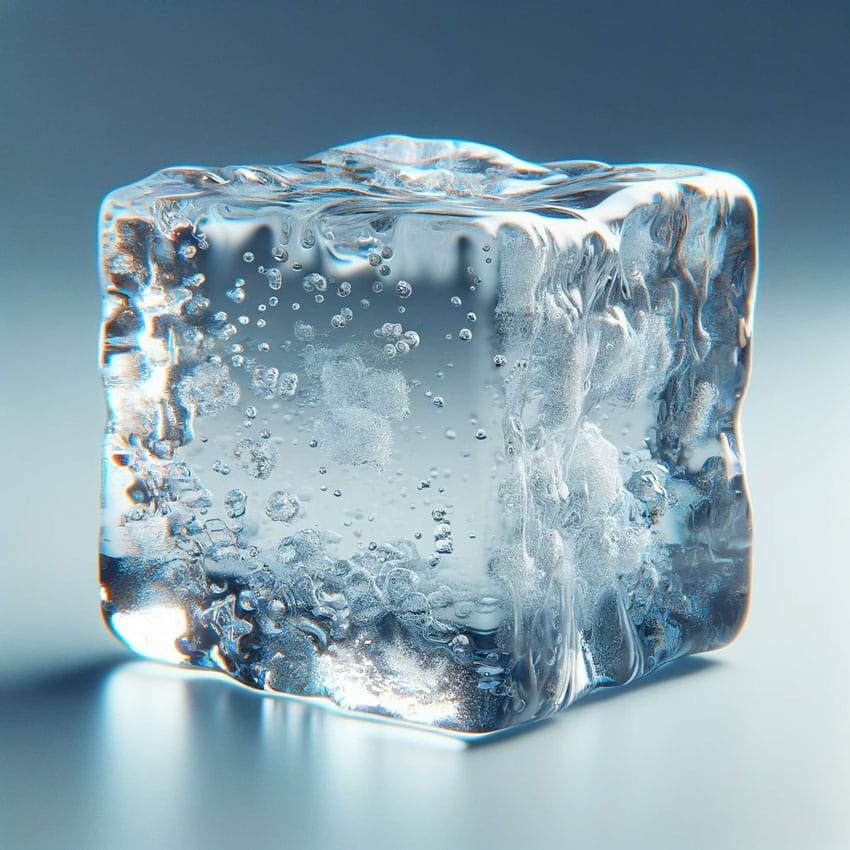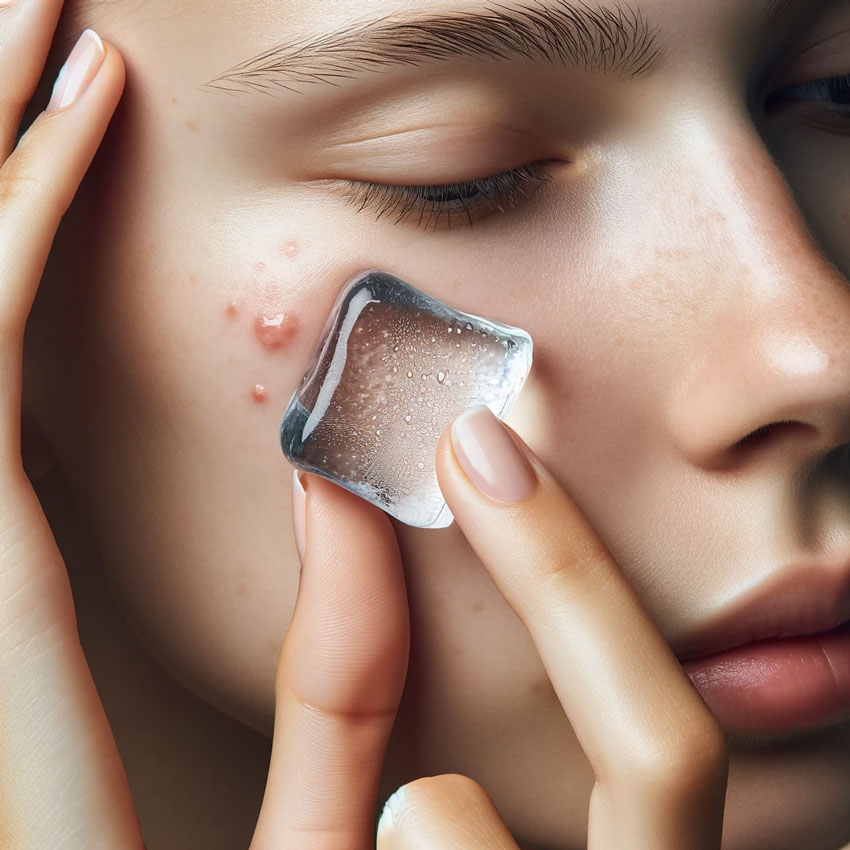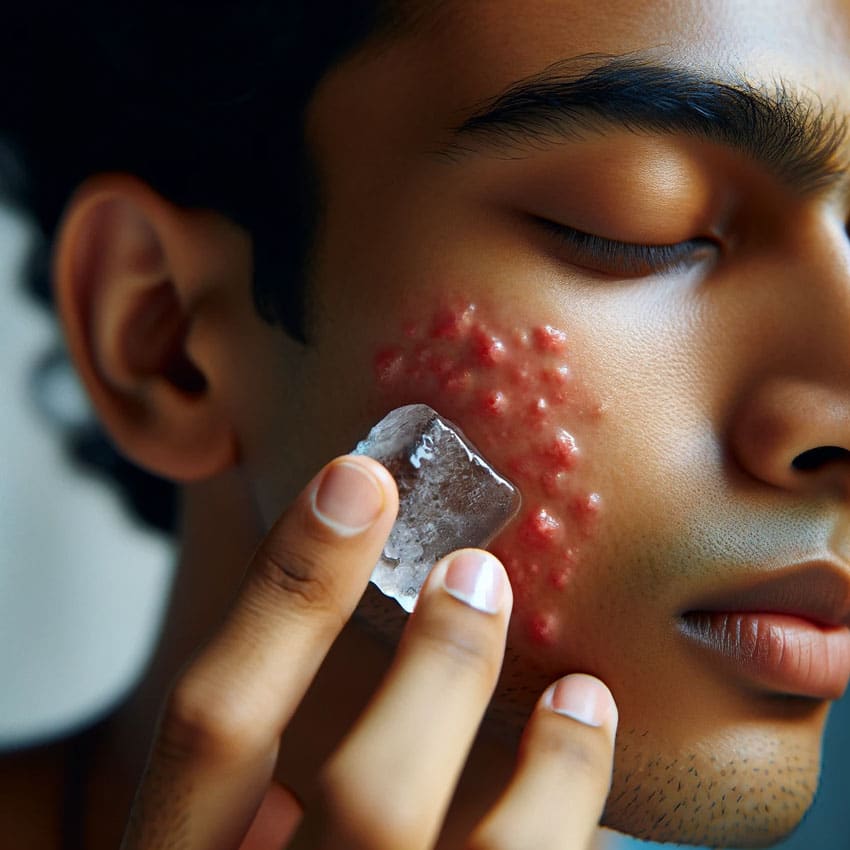Ice is a common household item that can be used for a variety of purposes, including treating acne.
Many people believe that applying ice to acne can help reduce inflammation, redness, and swelling. However, the effectiveness of ice as an acne treatment is a topic of debate among dermatologists and skincare experts.
Understanding Acne
Acne is a common skin condition that affects people of all ages and genders. It occurs when hair follicles become clogged with oil and dead skin cells, leading to the formation of pimples, blackheads, and whiteheads.
Acne is most commonly found on the face, chest, and back, where there are more oil glands.
The main cause of acne is the overproduction of sebum, an oily substance that helps to lubricate the skin. When too much sebum is produced, it can mix with dead skin cells and bacteria, clogging the pores and causing inflammation.
Acne-causing bacteria, known as Propionibacterium acnes, can also contribute to breakouts by causing an immune response in the skin.
There are various factors that can contribute to the development of acne, including hormonal changes, genetics, and certain medications. People with oily skin are also more prone to developing acne, as are those who frequently touch their face or wear tight clothing.
Despite its prevalence, acne can be a frustrating and embarrassing condition to deal with. It can also lead to scarring if left untreated.
Fortunately, there are many treatments available that can help to manage acne and prevent future breakouts. These include topical creams and gels, oral medications, and lifestyle changes such as maintaining a healthy diet and avoiding certain triggers.

Role of Ice in Skincare
Ice has been used for centuries as a natural remedy for various skin conditions, including acne. It is believed that the cold temperature of ice can help to reduce inflammation, redness, and swelling associated with acne breakouts.
When applied to the skin, ice constricts blood vessels, leading to decreased blood flow and diminished inflammation. This is particularly helpful for calming the appearance of acne blemishes.
Skin icing, also known as cold therapy, is a popular skincare technique that involves applying ice or cold objects to the skin. This technique is believed to have several benefits for the skin, including reducing puffiness, improving circulation, and tightening pores.
Some people also use skin icing as a way to reduce the appearance of fine lines and wrinkles.
Cold therapy is a safe and effective way to manage acne breakouts. It is particularly useful for people with inflammatory acne, which is characterized by red, swollen, and painful pimples. By reducing the inflammation of pimples, you’re directly reducing their size.
However, it’s important to note that ice is not a miracle cure for acne and should be used as part of a comprehensive skincare routine.
In addition to reducing inflammation, ice can also help to improve the overall health and appearance of the skin. It can help to tighten pores, reduce puffiness, and improve circulation, which can all contribute to a more youthful and radiant complexion.
Ice as a Treatment for Acne
Ice therapy is a popular and easy at-home remedy for treating acne. It is a simple and inexpensive way to reduce inflammation, swelling, and redness associated with acne breakouts.
Ice therapy can help to relieve the pain and discomfort that often comes with acne, and can even help to prevent future breakouts.
When applied to the skin, ice constricts blood vessels, leading to decreased blood flow and diminished inflammation. This is particularly helpful for calming the appearance of acne blemishes.
Ice therapy is especially effective for treating inflammatory acne, which is characterized by redness, swelling, and tenderness.
To use ice as a treatment for acne, it is best to make an ice wrap or an ice pack rather than applying ice directly to the face. This is because direct application of ice can cause numbness and tingling, which can be uncomfortable.
Instead, wrap ice in a towel or use a cold compress to apply to the affected area.
Ice therapy is an anti-inflammatory treatment that can help to reduce the size and severity of acne breakouts. It is a safe and convenient method of preventing an acne lesion from becoming more inflamed.
However, it is important to note that ice therapy is not a cure for acne and should be used with other acne products and treatments.
While ice therapy is generally safe and has few side effects, it is important to use caution when applying ice to the skin.
Prolonged exposure to cold temperatures can cause damage to the skin, so it is best to limit ice therapy to no more than 20 minutes at a time. If you experience any discomfort or pain while using ice therapy, discontinue use immediately.

Professional Acne Treatments
While nonprescription acne treatments can be effective for some people, others may need to seek professional help from a dermatologist. Dermatologists can provide a range of treatments that are not available over the counter.
One of the most common professional acne treatments is prescription medication. Dermatologists may prescribe topical medications containing ingredients such as benzoyl peroxide or salicylic acid, which can help to unclog pores and reduce inflammation.
Oral medications, such as antibiotics or isotretinoin, may also be prescribed for more severe cases of acne.
Another professional acne treatment option is cryotherapy, which involves freezing the affected area with liquid nitrogen. This can help to reduce inflammation and kill bacteria that contribute to acne.
It is important to note that professional acne treatments may have side effects and should only be used under the supervision of a dermatologist. Additionally, it may take several weeks or months to see results from these treatments.
The American Academy of Dermatology recommends that individuals with moderate to severe acne seek professional help from a dermatologist. Dermatologists can provide personalized treatment plans and monitor progress to ensure that the treatment is effective and safe.
Potential Risks of Using Ice
While using ice can be an effective way to reduce inflammation and pain associated with acne, there are also potential risks to consider.
One of the most significant risks of using ice directly on the skin is the potential for frostbite. Frostbite occurs when the skin and underlying tissues freeze, resulting in damage and tissue death.
While it is rare for frostbite to occur from using ice on the skin, it is still a possibility if the ice is left on the skin for too long.
To avoid the risk of frostbite, it is recommended to wrap the ice in a cloth or paper towel before applying it to the skin. This can help to prevent direct contact between the ice and the skin, reducing the risk of tissue damage.
Another potential risk of using ice on the skin is the development of an ice burn. This can occur when the skin is exposed to extreme cold for an extended period of time, resulting in tissue damage.
To avoid ice burns, it is important to limit the amount of time the ice is in contact with the skin and to use a cloth or paper towel to prevent direct contact.
Additionally, some individuals may be sensitive to cold temperatures and develop a condition known as cold urticaria. This can cause itching, redness, and swelling of the skin and can be triggered by exposure to cold temperatures, including the use of ice.

Alternative Home Remedies for Acne
In addition to using ice on pimples, there are several other home remedies that can be tried to help manage acne. While some of these remedies may work for some people, they may not work for others. It is important to note that these remedies should not replace medical treatment if acne is severe or persistent.
Tea
Tea, particularly green tea, contains antioxidants that may help reduce inflammation and fight acne-causing bacteria. Applying cooled, brewed green tea to the skin with a cotton ball may help reduce redness and inflammation.
Aloe Vera
Aloe vera has anti-inflammatory properties and may help soothe irritated skin. Applying aloe vera gel to the affected area may help reduce redness and inflammation.
Warm Compress
Applying a warm compress to the affected area may help open pores and reduce inflammation. To make a warm compress, soak a clean washcloth in warm water and apply it to the affected area for several minutes.
Home Remedies
- Apply natural oils such as tea tree, jojoba, or coconut oil to the affected area.
- Use a lactic acid treatment, such as yogurt or buttermilk, to exfoliate the skin and reduce inflammation.
- Using a derma roller to help reduce the appearance of acne scars

